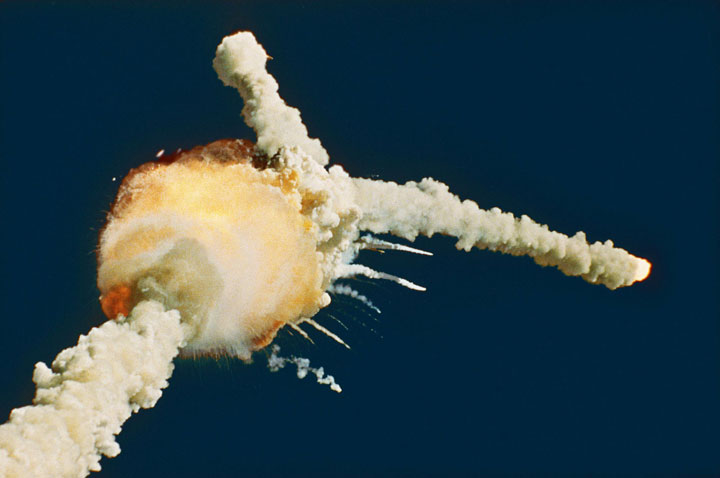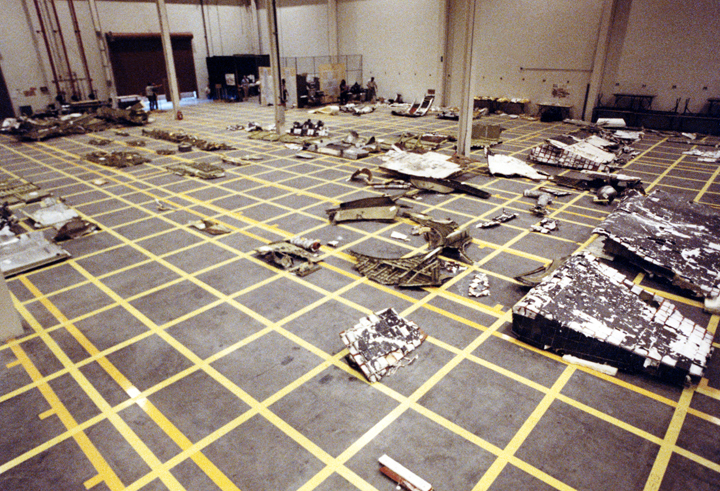Where were you on January 28, 1986?

On that day 30 years ago, the temperature was unusually chilly (-1 C) at the Kennedy Space Center in Cape Canaveral, Florida. The launch of the space shuttle Challenger — originally scheduled for January 22 — had been moved five times. Spectators across the country and around the world were eagerly anticipating this unique launch: along with six astronauts — Gregory Jarvis, Judy Resnik, Dick Scobee, Ronald McNair, Mike Smith and El Onizuka — would be Christa McAuliffe, the first teacher in space.
On the business side of things, there was some concern as to how the shuttle might perform in such unusually frigid weather. Engineers discussed how the solid rocket boosters (SRB) might perform. Concerns were raised, but in the end, a green light for the launch was given.

Of course, the public knew of no discussions.
Televisions across the country were tuned into the broadcast. Classrooms and gyms were filled with students eager to see a teacher reach space. To anyone not at the launch site, the blue sky was cunningly deceptive, conveying a sense of ideal conditions for a launch. They were anything but ideal.
At 11:38 a.m., the engines ignited and Challenger began its ascent. Spectators at Cape Canaveral, including Christa McAuliffe’s family, cheered as the bright, white trail of smoke stretched into the sky.
Back in the control room, there was some unsual data coming through, though not enough to cause any major concerns: the SRBs operated at reduced thrust; at 60 seconds into the launch, telemetry noticed a difference in pressure between the right and left boosters.
At 68 seconds into the flight, CAPCOM gave the go to throttle up the engines, a normal procedure.
“Challenger, go at throttle up.”
“Roger. Go at throttle up,” commander Dick Scobee replied from the shuttle.
It was the last communication from Challenger.
Seventy-three seconds into the flight, a bright explosion lit up the blue sky where the shuttle had been. The two solid rocket boosters veered wildly in different directions from the fireball that hung in the sky. Debris left wisps of smoky trails; large sections of the space shuttle soared through the sky. It slowly rained down on the Atlantic Ocean.
Spectators were puzzled. Confusion settled in. It slowly began to dawn on spectators around the country that the shuttle had been lost.
“Obviously a major malfunction,” rang out across the launch site.
NASA’s space program hadn’t seen a disaster of this magnitude since Apollo 1, when astronauts Gus Grissom, Ed White and Roger Chaffee were killed by a fire on the launch pad on Jan. 27, 1967.
For years NASA seemed invincible, even after the near-tragedy of Apollo 13. The shuttle program — which saw roughly one launch every month — had been untouched by catastrophe. Launches had almost become mundane.
“To the public, it was a false sense of security,” said space expert and Royal Astronomical Society of Canada‘s executive director, Randy Attwood. “When this happened, it was a real kick in the gut.”
But for those involved in the astronaut program, which included test pilots where one out of every three died, tragedy was a known and necessary part to testing the boundaries of exploration.
“Everyone in the industry was aware of the risks, but had come to the conclusion that the benefits outweighed the risks,” Attwood said.
An investigation into the cause determined that the fault lay in the O-ring of the right SRB. Cold temperatures had caused a gap in the seal allowing gases to escape, resulting in the failure in the external tank (the large orange tank) and subsequent explosion. The space shuttle broke up due to high aerodynamic forces. It’s unknown when the crew perished, though it has been suggested that they may have still been alive — though unconscious — when they hit the ocean.
It took 32 months before NASA’s return to flight. Lessons had been learned, and for certain more caution was taken in subsequent launches. Heaters were put on the O-rings; they knew not to launch in such cold weather; and an escape system was put into place for astronauts.
Following the loss of Challenger, there were some who believed that manned spaceflight was far too dangerous. That feeling was not shared by the families of the lost astronauts who all said they didn’t want the astronauts to have died in vain.
As to the future of human spaceflight, NASA has plans to send a manned mission to Mars. Launches to the International Space Station continue and will until at least 2024.
“I don’t know how risk-averse society is today about going into space,” Attwood said. “Now people have seen missions like this go bad.”
But risk has always been part of the equation in exploration.
“Our way of living is the result of scientific research over the past 500 years,” said Attwood.
WATCH: Retired astronomer David Dodge from the Vancouver planetarium was hosting a live launch event at the time of the Challenger disaster. Dodge looks back at that day 30 years ago.

Whether or not the public is ready to face another loss of crew remains to be seen.
But as President Ronald Reagan said in his address to the nation the night of the disaster, “It’s all part of the process of exploration and discovery. It’s all part of taking a chance and expanding man’s horizons. The future doesn’t belong to the faint-hearted; it belongs to the brave.”
Watch Challenger Disaster: The Lost Tapes on National Geographic Saturday, Jan. 30 at 9 p.m.







Comments